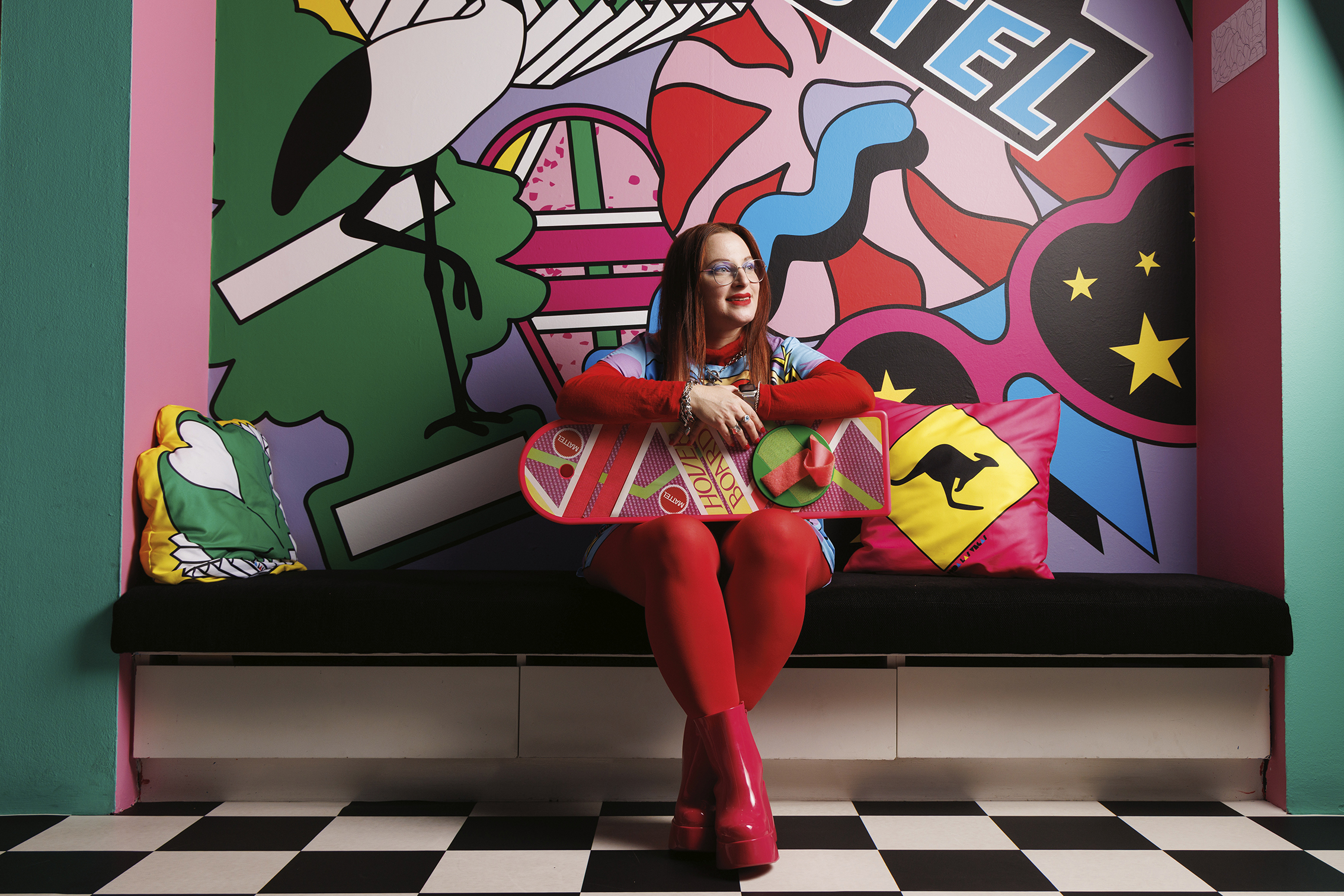Volatile times call for innovative measures and collaborative futures
Posted June 30, 2025

An increasingly fractured global landscape—marked by geopolitical rifts, environmental stress, social fragmentation and rapid technological change—now threatens stability and progress.
That is the stark assessment of the World Economic Forum’s Global Risks Report 2025, which distils the views of more than 900 experts on the threats set to define the next decade.
Recent trade and tariff shocks have further thickened the fog, rupturing alliances that have underpinned growth and innovation.
Professor Ariella Helfgott might not have a crystal ball, yet for more than 20 years the South Australian futurist has helped organisations, governments and communities navigate turbulence through strategic foresight.
Innovating through uncertainty
Uncertain times present great opportunities to innovate and can foster new ecosystems fit for new futures and new ways of thinking, Professor Helfgott says.
“The danger,” Helfgott notes, “is that volatility scares people into clinging to the familiar. Yet the status quo is already dissolving; the safest bet is to prototype the future before it arrives.”
A globally recognised practitioner of strategic foresight and scenario planning, Professor Helfgott is global Director of Foresight and Strategic Learning in the World Energy Council (WEC), Director of Foresight and Decision-Making for the One Basin CRC.
She has also recently established the SA Futures Agency based at Lot Fourteen aimed at helping organisations embed strategic foresight into strategy and policy and create positive futures in her home state.
“Being based at Lot Fourteen we sit next to innovators like Convergen, who can help us turn participatory foresight into data rich visuals and immersive VR so people can walk through the futures they design.
“Lot Fourteen is a living lab where deep tech startups, researchers, creatives and government collide to prototype tomorrow.”
What is Strategic Foresight?
The Organisation for Economic Co-operation and Development describes strategic foresight as a “structured and systematic approach of exploring plausible futures to anticipate and better prepare for change”.
Over 90 per cent of major US and European companies had foresight in their operations, with a third of those companies having a dedicated unit, according to the World Economic Forum.
Shell, World Energy Council, the Organisation for Economic Cooperation and Development (OECD), the World Economic Forum, United Nations Development Program and global firms such as Deloitte regularly release publicly available scenario reports covering everything from climate and energy to technology, society, and geopolitics – whatever matters for making better decisions in the present.
For example, the WEC’s report Rocks and Rivers helps countries and companies navigate a fragmented global status quo while continuing to work towards clean, reliable, affordable energy for everyone in the world.
While, closer to home, the One Basin CRC is using foresight to foster new innovation ecosystems across the Murray Darling Basin with regional innovation hubs to promote thriving, resilient, prosperous communities in the face of changing climate, technological and workforce conditions.
For Professor Helfgott, the work of strategic foresight is about building future focused cultures and capabilities – not just for leaders and experts, but for everyone. “My passion is making foresight accessible because the future belongs to everyone,” she says. “The future will be shaped not just by what happens to us – but by what we do about it, what we can imagine, and how we collaborate.”
Strategic foresight hinges on four fundamental questions of any organisation:
1. What do we think is probably going to happen?
Drawing from data, trends and mathematical models.
2. What do we want or not want to happen?
Creating a safe space for people to articulate an aspirational vision of the future they want to live in.
3. What could possibly or plausibly happen?
Exploring scenarios that map out the plausible future landscape decision-makers are facing.
4. What are we going to do about it?
This is where insights are translated into action.
Upskilling SA for success
“Anything could happen over the next few years,” Helfgott stresses – geopolitical shocks, economic swings, climate extremes. “Our collective capacity to navigate that uncertainty is now mission critical and there is no ready-made playbook.”
“Navigating deep uncertainty means innovating our way through it together, iteratively, catching the learnings as we go – and everyone at Lot Fourteen is part of that learning engine.”
Foresight, she adds, is action in the present.
“Scan early, surface weak signals, rehearse bold scenarios, and let them stretch what we think is possible – to inform both our aspirations and our strategies to achieve them”.
“It’s actually a change in culture: you’re changing from paying a consultant to give you the right answer – because no one can give you the right answer – and you need to engage with deep uncertainty, have difficult conversations, figure out what you want and navigate a future where everything is changing and you’re innovating as you go.”
She highlights that this is also why the practice of foresight, and the communities and cultures it requires, is not something that can just be outsourced to AI, though she does work closely with AI to augment collective human intelligence.
Her invitation is simple: every South Australian has a stake—and a role—in shaping the state’s next chapter.
Strategic foresight puts the pen in all of our hands.
Great things come to those who subscribe
Subscribe
"*" indicates required fields
Adelaide 5000
Developed by Frame Creative
Design by The Sideways Theory
Design by Sixth Street Design
Developed by Frame Creative
© Lot Fourteen All Rights Reserved

